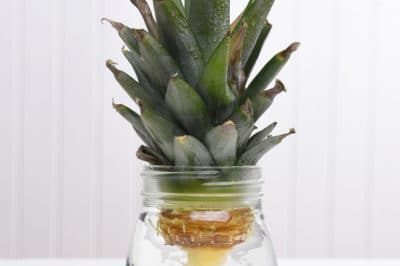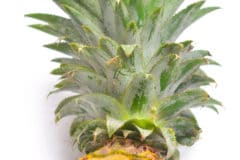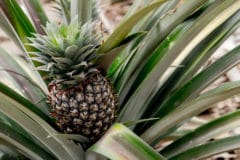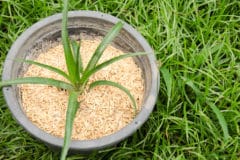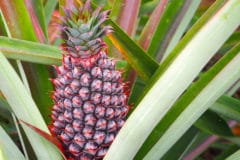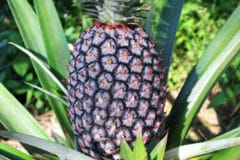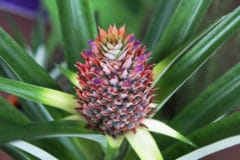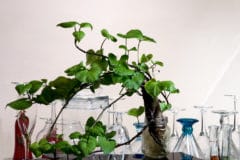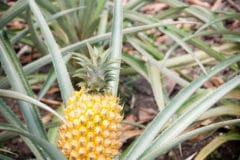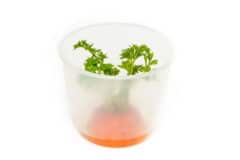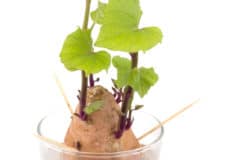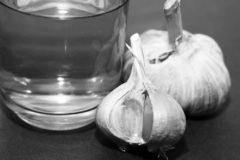How To Harvest
Use the pineapple fruit in any way you like. It’s the top of the pineapple that will create a superb houseplant. That green leafy thing you normally throw into the compost. This time, save it.
Remove a few layers of leaves from around the base of the top just above where you separated it from the fruit. This will create rings of bumpy-looking nubbins. The roots will grow from the nubbins. By removing the foliage, you are sending a signal to the plant to redirect its growth habit and create roots.
To Place In Water Or Not?
Tons of gardening articles out there will suggest that this top-base should go into a glass of water until roots sprout. Pineapples are bromeliads and related to air plants. They need very little water to survive. There’s no need to baby these plants. Placing the tops in water is not a necessary step to sprouting a pineapple top. Many gardeners do it, swear by it, and it does work.
How To Grow In Water
To root the top in water, fill a glass or bowl with fresh non-chlorinated water. If you have municipal water that is chlorinated, let it sit in a container overnight to distill before using it.
Use toothpicks stuck into the pineapple crown to hold it above the bottom of the glass. Only the part with the nubbins should be underwater, and you’ll want to avoid letting it touch the bottom of the glass. The toothpicks will rest on the rim of the glass keeping the fruit in place.
Roots will form from the nubbins within one or two weeks. Replace the water every couple of days. Do not let it go stagnant because it may invite disease.
Some benefits and disadvantages to starting tops in water include:
- Water may slightly speed up root growth.
- You get to see what is happening and monitor it daily.
- You have to change the water out every few days creating more work.
- The plant will need to be transplanted, which can be stressful and set it back.
Starting In The Air
Many gardeners will harden their pineapple tops off in the air. After removing the lower leaves, let the pineapple top sit on the counter for one or two days to heal the wounds created.
Once hardened, the top can then go into water or directly into prepared soil.
